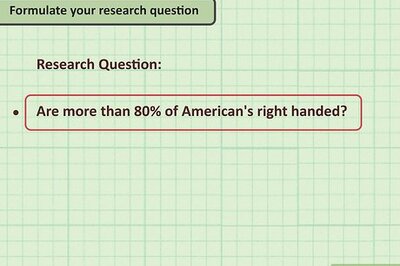
views
Analytics has been the hot topic in business circles. CIOs are curious on what's new in analytics and how it will impact business outcomes. But given the ongoing ICC Cricket World Cup 2015, Firstpost reached out to one of the well-known CIO in the industry to understand how new analytics and data visualisation impact the cricket and sports industry.
"In-fact never before as spectators could we understand cricket and its nuances. Now with the help of visual analytics even children have the game's facts and figures straight. That is the power of technology," Kumar asserts.
Elaborating on the science of the game, he says, "Now-a-days to succeed in sports, a player needs in-depth understanding of science and arts of game. Art is talent. Science is polishing these talents, making it extraordinary by refining actions and seeing certain pattern. Therefore, it is extremely important to have a mix of both to succeed in sports these days."
Moreover, Kumar believes analytics has a very wide scope for business not just in cricket, but in the overall sports industry. "In almost every field of sports/games, developing analytics based on data, blending with strategy input from champions, making analysis supplemented with prescriptive points will explode the opportunities exponentially."
Now that analytics means "big business" in cricket, how is this technology impacting his company? He replies, "It all started with exception reporting, then multi-dimensional reporting on various axes and then slice-n-dice, we did it all. Strategies improved. Business performance became better. Competition became fierce. The result is survival for the fittest. Now, we have started working on prescriptive and predictive analytics."
Commenting on use cases for social sentiment analysis and predictive analysis, Kumar adds, "For knowing brand equity and its approximate 10 percent around rider is last mile edge and a real game changer. It allows organisations to not only shape up current landscape but also expand and diversify in all aspects. Without social sentiment insight gradually survival will be in question."
Data visualisation tools are seen as key to Big data analytics success. These tools help companies' top management in decision making. Kumar, on this, claims, "Top point is decision making, informed decision making than gut feel based decisions and actions. It helps compete in market better, speeds up the process of customer acquisition, and market reach. Now in current scenario the fast will eat the slow. Data visualisation helps in organic growth of organisations immensely."


















Comments
0 comment